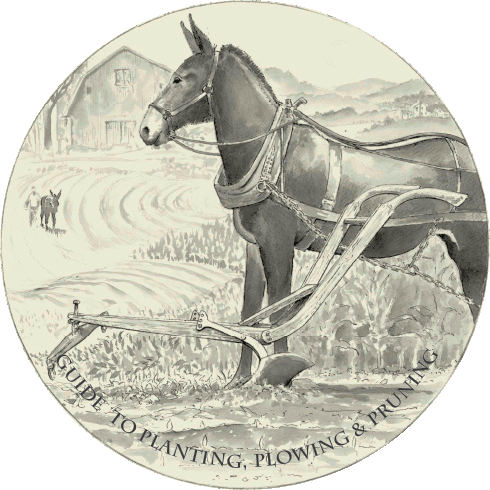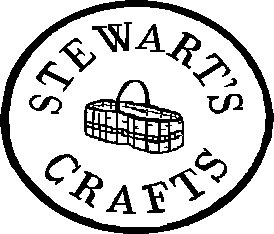Site Creation Principles
What Makes This Web Site Superior to Others
PresentationCodingTestingWhat About Your Web Site? |
Presentation
The primary principle guiding my web site presentation is this: I want as many people as possible to be able to view my web site. This is called accessibility.
What this entails is not entirely obvious at first glance. It means that the web site has to look “good” (well-organized) on all browsers (not everyone uses Internet Explorer). It means that the web site has to look right on any computer hardware: your computer display, my computer display and (nearly) every other computer display in the world. It also means that it has to be easy to read so that people who are visually impaired will enjoy visiting the web site.
Making the web site look “pretty” is also important, but definitely a secondary consideration. All the things in the previous paragraph have to be done before I worry about how pretty it is.
For a description of how I meet all of the accessibility requirements, see Testing below.
Coding
This web site is hand-coded. What that means is that someone at Christian Web Programming typed every letter of every line of code that makes up this web site. Many web site creators use Web Page Generator software. That is much quicker (you only have to type in the words that appear on each web page), but it produces code that is much less efficient (much larger file size) and it produces web pages that do not meet the presentation requirements mentioned above. Most professionals hand-code their web pages.
I currently use the free HTML-Kit to type in my code, but I also recommend the free AceHTML. HTML-Kit has the significant advantage of an integrated FTP client (which allows you to upload your web pages to your web site from within the editor). AceHTML is superior to HTML-Kit in many ways, but lacks the useful integrated FTP client.
This web site is coded using XHTML 1.1, CSS 2.1 and ASP. These are all standardized web page coding methods, which means that web pages created with them will display on any browser (though not necessarily the same way on all browsers).
Testing
Testing the pages of a web site is more involved than you might think when attempting to meet the presentation requirements mentioned above.
-
 Code
Validating:
The code of every web page is tested with the
W3C
XHTML and
CSS
validators.
This ensures that all the code found in my web
pages meets the standards expected by
browsers.
You can
see links
to the
W3C
validators at the bottom of
every web page.
Go ahead and click on them see if this web page
uses valid code.
Code
Validating:
The code of every web page is tested with the
W3C
XHTML and
CSS
validators.
This ensures that all the code found in my web
pages meets the standards expected by
browsers.
You can
see links
to the
W3C
validators at the bottom of
every web page.
Go ahead and click on them see if this web page
uses valid code.
-
 Browser Testing:
Every web page is tested with the most
popular browsers.
The object is to make sure that each web page
has exactly the same layout no matter
which browser someone is using.
Currently (April 2010), that includes:
Browser Testing:
Every web page is tested with the most
popular browsers.
The object is to make sure that each web page
has exactly the same layout no matter
which browser someone is using.
Currently (April 2010), that includes:
- Internet Explorer versions 6, 7 and 8
- Firefox version 3
- Safari version 4
- Chrome version 4
- Opera version 10
-
 Computer Display Testing:
Every web page is tested at 800-pixel-wide and
1600-pixel-wide resolution.
The purpose is to make certain that the
page layout remains the same no matter
what display hardware someone is
using.
I use 800 pixels because (as of April 2010)
over 98% of internet users have a
display at least 800 pixels wide.
[Source]
Although you can make a web page look nicer if you
make it wider, visitors with a
narrow display will find your web site
difficult to use.
Computer Display Testing:
Every web page is tested at 800-pixel-wide and
1600-pixel-wide resolution.
The purpose is to make certain that the
page layout remains the same no matter
what display hardware someone is
using.
I use 800 pixels because (as of April 2010)
over 98% of internet users have a
display at least 800 pixels wide.
[Source]
Although you can make a web page look nicer if you
make it wider, visitors with a
narrow display will find your web site
difficult to use.
-
 Resizable Text Testing:
Every web page is tested with different
font sizes to ensure that the layout remains
intact no matter what size text the
visitor uses in their
browser.
For enlarged text to display correctly,
you will need a display wider than
800 pixels.
Internet Explorer users:
under the View menu select
Text Size and change the size as
you like.
For most other browsers:
under the View menu select
Zoom and change the size as you
like.
Resizable Text Testing:
Every web page is tested with different
font sizes to ensure that the layout remains
intact no matter what size text the
visitor uses in their
browser.
For enlarged text to display correctly,
you will need a display wider than
800 pixels.
Internet Explorer users:
under the View menu select
Text Size and change the size as
you like.
For most other browsers:
under the View menu select
Zoom and change the size as you
like.
-
 WCAG
Visibility Testing:
WCAG
is a set of
W3C
standards that includes, among other things,
standards for web page
readability based on text size and
color.
When a web page complies with WCAG text size
and color requirements, it ensures that
people with visual impairment will
be able to easily read the text on that web
page.
Every web page is tested using the excellent
Colour Contrast Analyser
tool
(available only for Firefox).
You will also notice that I use larger text than
most web sites:
this is in pursuit of the same goal.
Finally, I choose web page colors that
satisfy WCAG requirements using my own
tool now available online, the
Web Site Theme Creator.
As far as I know, this is the only tool
available that allows you to choose
from all the web page colors that meet
WCAG standards.
WCAG
Visibility Testing:
WCAG
is a set of
W3C
standards that includes, among other things,
standards for web page
readability based on text size and
color.
When a web page complies with WCAG text size
and color requirements, it ensures that
people with visual impairment will
be able to easily read the text on that web
page.
Every web page is tested using the excellent
Colour Contrast Analyser
tool
(available only for Firefox).
You will also notice that I use larger text than
most web sites:
this is in pursuit of the same goal.
Finally, I choose web page colors that
satisfy WCAG requirements using my own
tool now available online, the
Web Site Theme Creator.
As far as I know, this is the only tool
available that allows you to choose
from all the web page colors that meet
WCAG standards.
What About Your Web Site?

Christian
Web
Programming
Your web site can achieve the same high-quality
standards that you find on this web site.
Christian Web Programming
offers free quotes, extremely
competitive rates,
professional quality and
guaranteed
satisfaction.
Christian Web Programming also offers
free access to the
Web Site Theme Creator.
Finally, Christian Web Programming
always grants the customer
copyright privileges to the
finished web pages.
Nearly all professional web
developers retain the copyright to
your web
pages
—
which
means that if you ever decide to switch web
developers, they are not permitted
to make use of your existing web pages that you
spent your hard-earned money and time getting
just the way you wanted.



